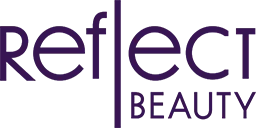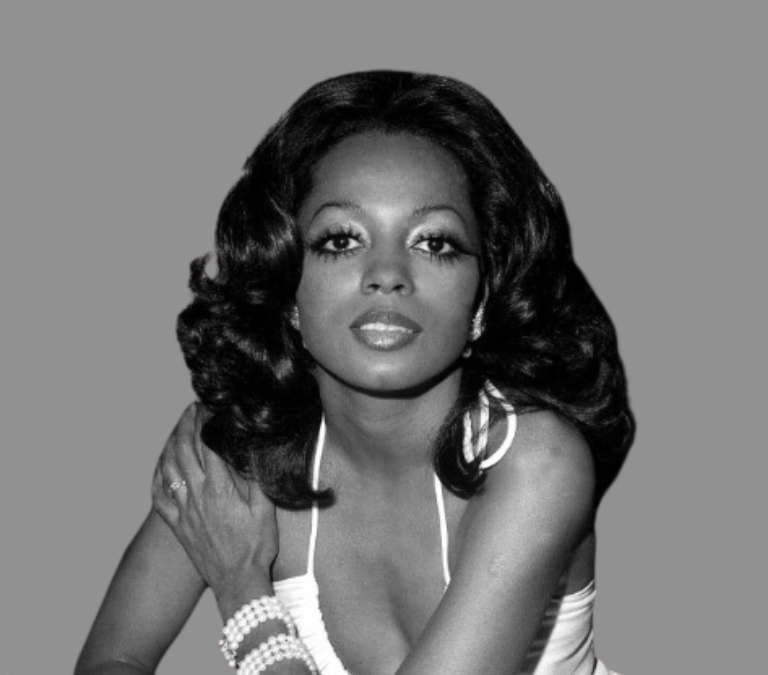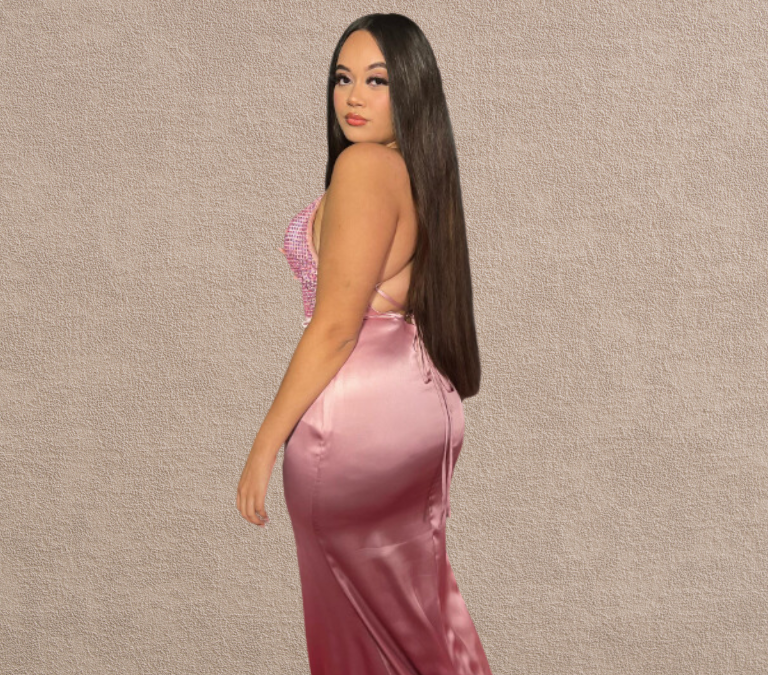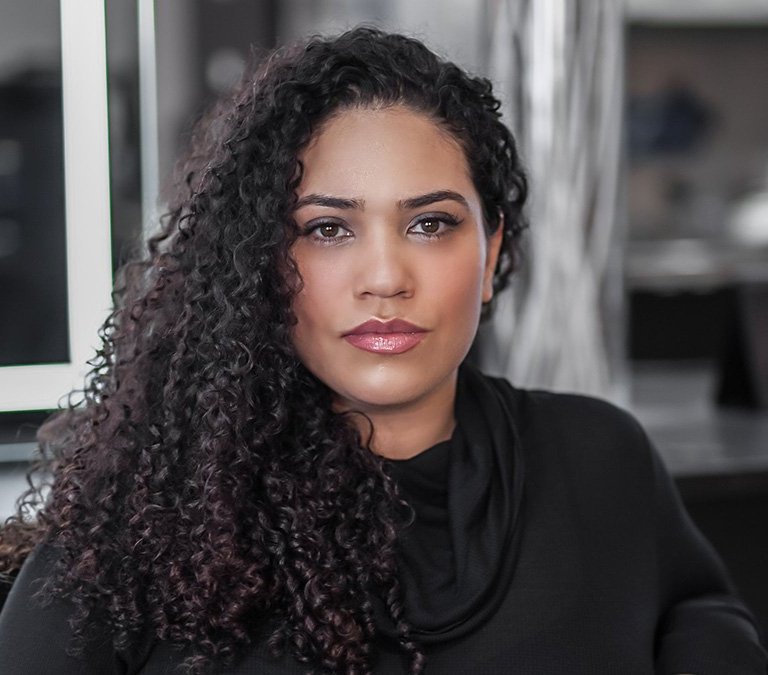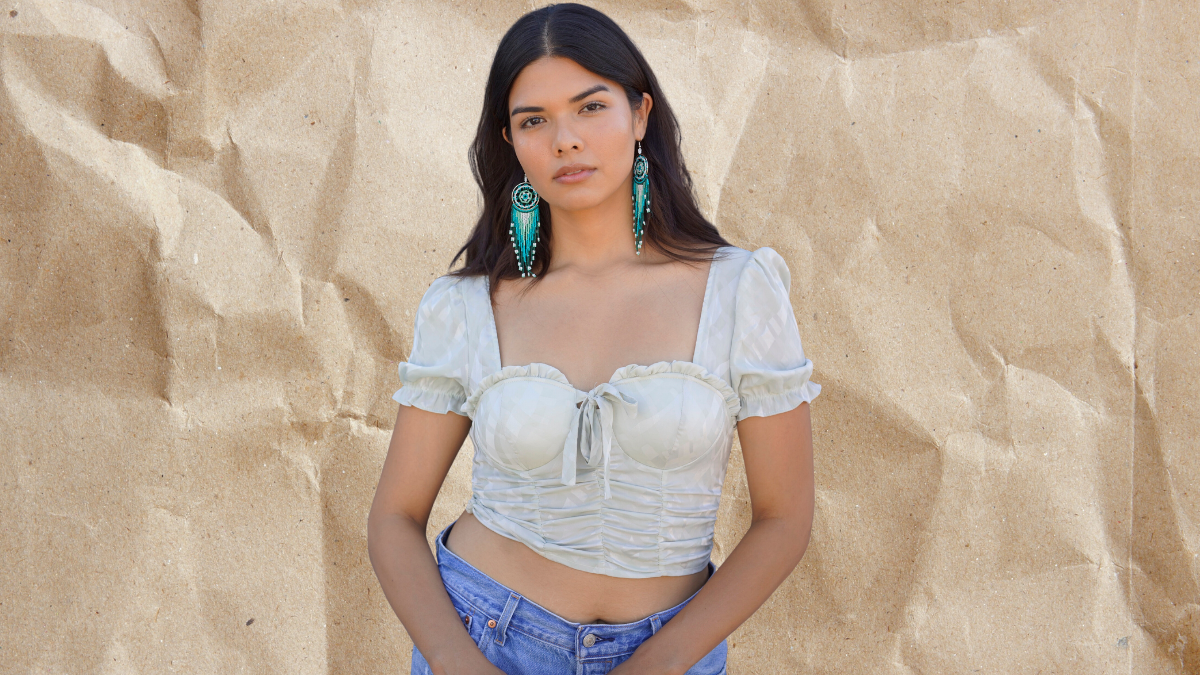
A decade ago, being a multi-hyphenate (actor-model-musician-waiter) gave the impression of a dilettante who didn’t need to be taken seriously, but in 2023 if you don’t have a side hustle (reality TV star-beauty mogul-underwear vendor), who even are you?
Siyowin is someone who seamlessly embodies her multiple professions—artist, advocate, model—with her multicultural identity.
[SEE ALSO: Inked Identity, 5 Minutes With Chloe Malay]
Reflect Beauty spoke with the Native American talent about her advocacy work and her artist life. Siyowin didn’t hold back and got real when it comes to what we all need to learn about Indigenous culture, diversity, and respect in our current cultural and political climate. Read on for our exclusive interview with Siyowin.
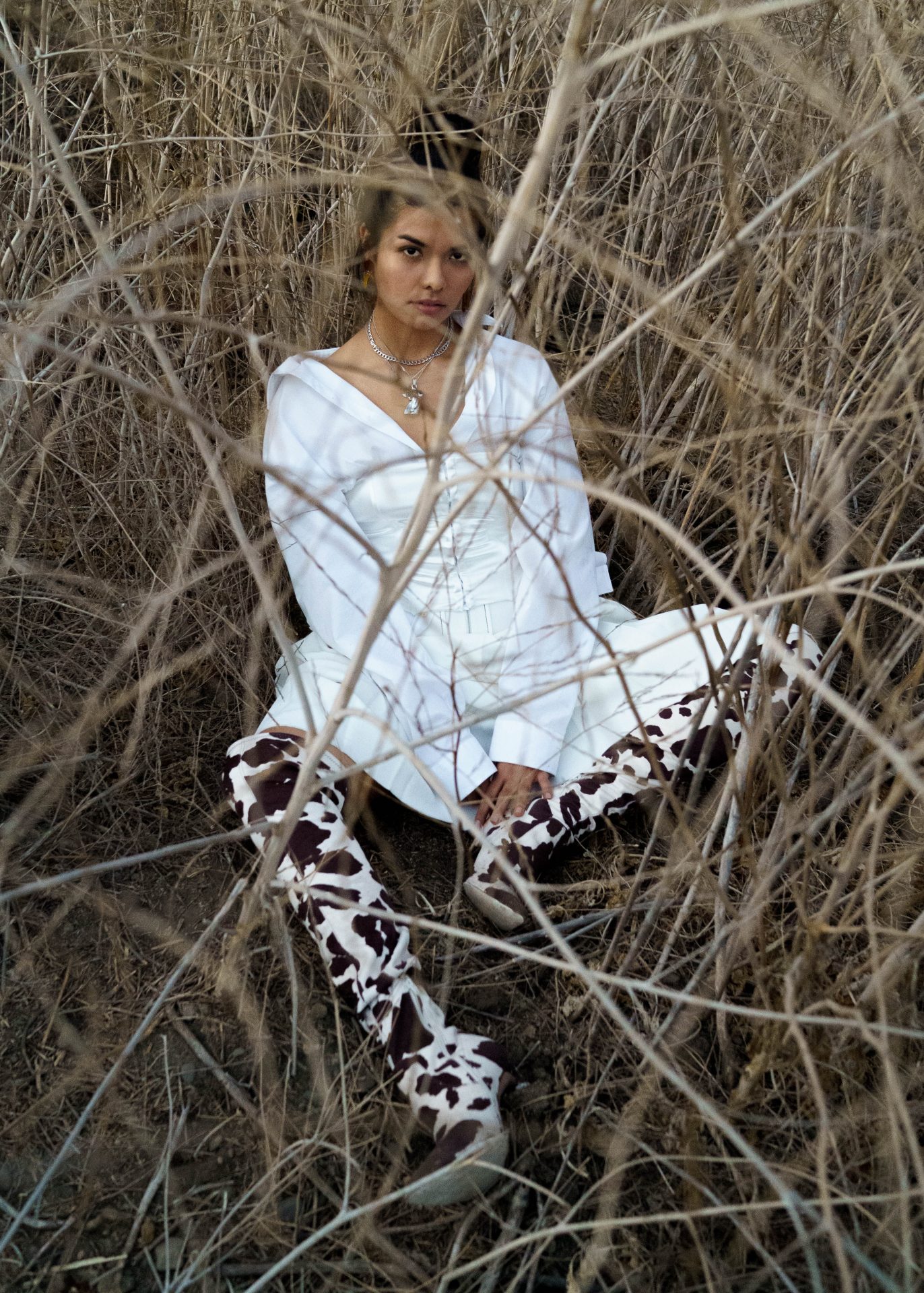
Your art and your work are so informed by mixed, yet overlapping, cultures and identities. How do you self-identify in your different worlds of art, fashion, activism, and modeling?
As a Native American and Mexican model and artist, my identity and work are shaped by the rich tapestry of my dual heritage. I am deeply committed to addressing the crisis of missing and murdered Indigenous women and the ongoing issues that Native Americans face in today’s society. In the modeling world, I see myself as a representation of the diverse beauty and strength that exist within Indigenous and Mexican cultures. In my art, I identify as a storyteller and advocate, using my creative expressions to draw attention to the plight of missing and murdered Indigenous women from both communities.
My work serves as a bridge between these two worlds, emphasizing the interconnectedness of Indigenous experiences and the urgency of addressing this issue collaboratively. As an activist, my identity is grounded in the fight for justice and awareness, striving to make a difference and honor the lives of those affected. I believe my unique blend of cultural identities gives me a powerful perspective to advocate for change and I am dedicated to building and using my platform to raise awareness, demand justice, and uplift the voices of those who have been silenced.
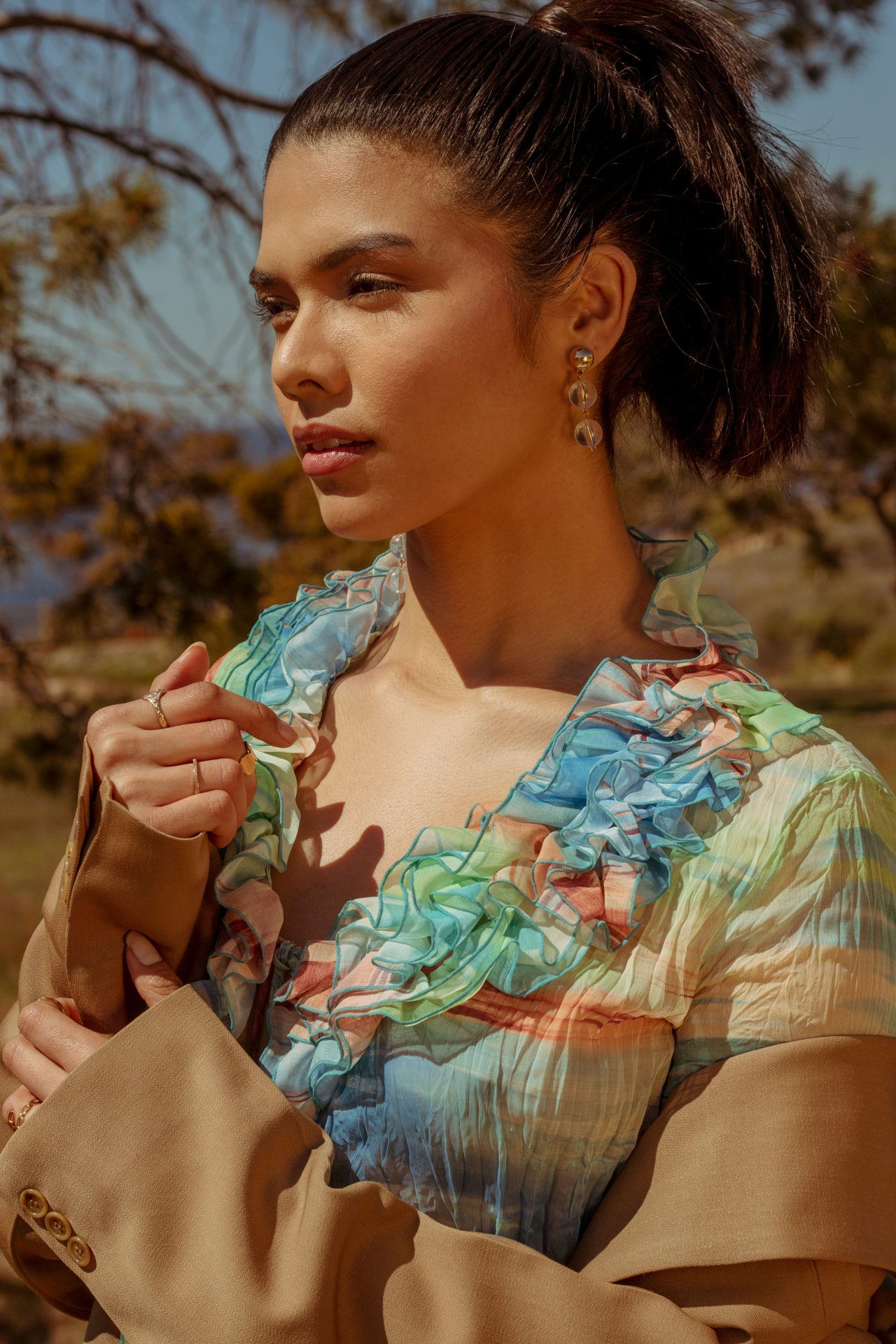
What’s it like growing up Native in the United States? The majority of Americans have such a narrow, stereotypical view of our Indigenous communities and very little contact on the daily. What do you most want people to be informed about? How can ordinary Americans be more aware, embracing and — let’s just say it — less ignorant?
Growing up Native in the United States sometimes feels like a very complex experience, defined by a rich tapestry of cultures, traditions, and histories. It’s important to acknowledge that Indigenous communities are incredibly diverse, with unique languages, customs, and worldviews. Yet many Americans hold narrow, stereotypical views of our communities due to limited exposure and historical biases.
What I most want people to be informed about is this diversity and the ongoing challenges we face, including historical traumas, disparities in resources, and cultural appropriation. To become more aware and less ignorant, non-natives can start by educating themselves about Indigenous cultures and histories, acknowledging historical injustices, and actively supporting Indigenous-led initiatives. Ultimately, embracing diversity and showing respect and empathy are crucial steps towards building a more inclusive and equitable society.
Can you tell us more about the MMIW movement, how you got involved, and how our readers can help?
The Missing and Murdered Indigenous Women (MMIW) movement is an effort to address the high rates of missing and murdered Indigenous women, particularly within Indigenous communities in the US and Canada. It seeks justice for victims, accountability for perpetrators, and systemic change to prevent further violence. The movement raises awareness, honors victims, and supports affected families through advocacy, community organizing, policy reform, and art that sheds light on this urgent and ongoing issue.
I got involved with the MMIW movement because I recognized the urgency of the crisis affecting Indigenous communities, particularly Indigenous women, girls, and Two-Spirit individuals. The alarming rates of disappearances and violence struck a chord with me, and I have felt a deep sense of duty to our community and a commitment to using my platform as a Native American and Mexican model and artist to raise awareness about this pressing issue. My involvement reflects my passion for justice, a desire to amplify the voices and stories of those affected, and a dedication to making a positive impact in addressing this crisis.
How did you get started as an artist and likewise, how did you get started as a model? Did you face challenges being an Indigenous woman in these domains that are historically white? Do you see things changing?
I started submitting to modeling agencies towards the end of the covid-19 pandemic. I had gotten laid off from my dream job as a social worker assisting low income families and children in East Los Angeles. The pandemic left me feeling even more hopeless. I connected with a stylist through instagram. She was seeking interns and I thought it would be fun to get a sneak peek into a world I’d never really thought of being a part of before. I went to different shoots, music videos, clothing warehouses, and more with her. I talked with different models about their experiences. They were all so gorgeous, kind, and filled with light. I thought, “Why don’t I just try this out and see what happens? What’s the worst thing that may happen? Someone says no?” So I decided to start submitting to various agencies in Los Angeles and I got scammed by one of the first ones! If you’re reading this and want to be a model, just know you should never have to pay any fees upfront for an agency. It is a scam.
After I learned this very important tip, I connected with Nomad Management, an agency that’s been helping me grow for the past two years. It has definitely been a challenging road for me as an indigenous mid-size model but there has been a lot of change and more focus and importance on representation for everyone. I recently challenged myself to go on a hunt for modeling agencies in New York. One of the agencies I was most nervous about meeting was Wilhelmina because they’ve always been on my manifestation board. I’m excited to say that I have signed with my dream agency Wilhelmina in NY!
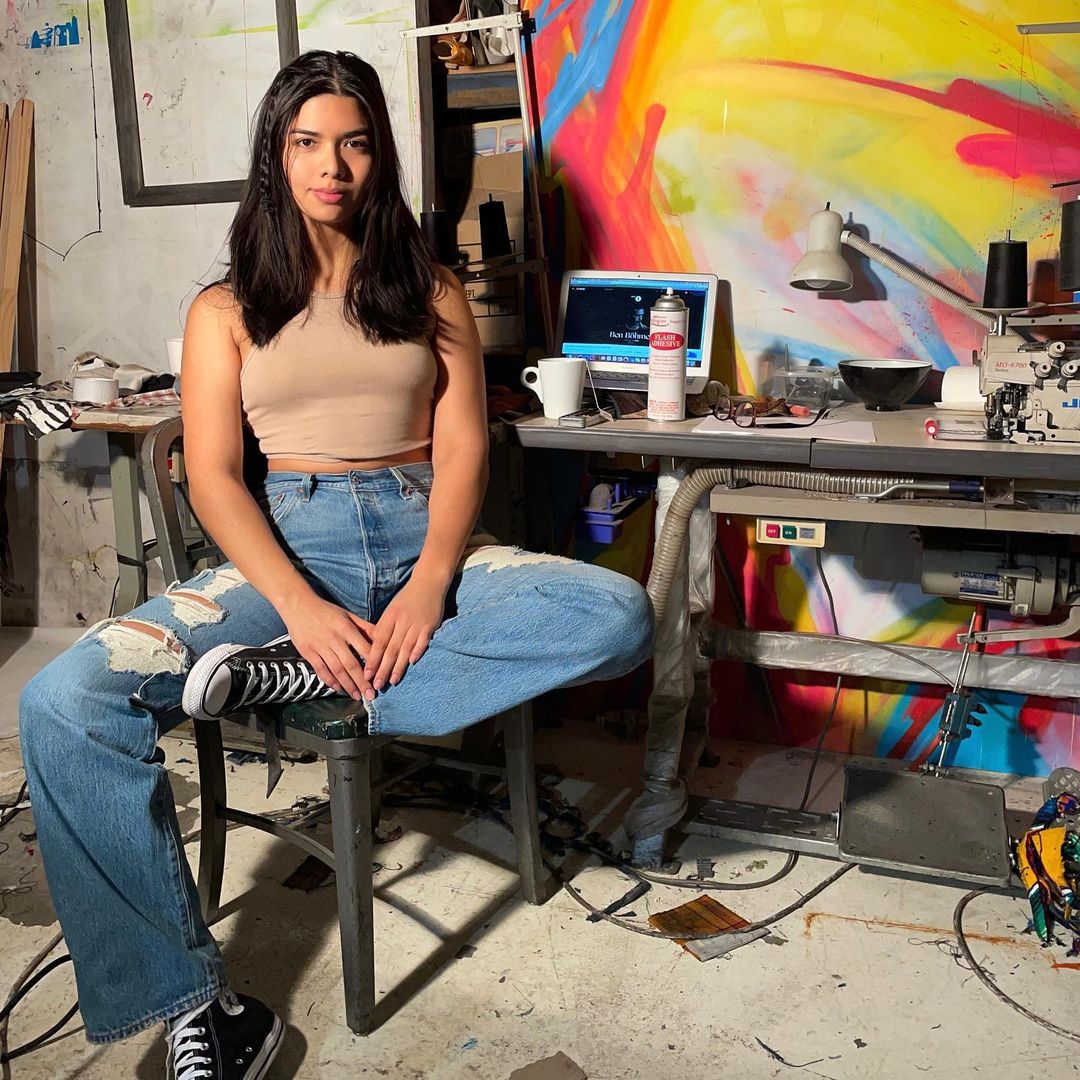
I officially started my art journey about a year ago. I’d just graduated from USC with my Masters in social work and decided that wasn’t it for me. I first learned how to spray paint butterflies. I love butterflies and their symbol for transformation, change, beauty, growth—all that good stuff! I would, and still do, stay up late hours blasting music and really getting in that zone of creating. There’s a sense of calm when you’re awake while most everyone else has gone to sleep.
With the help of my amazing boyfriend, Rolland Berry, I learned the art of burning screens, silk screening, wheat pasting, color theory—basically a crash course of art fundamentals without spending money on art school. I started developing my own style and meaning. I knew my real style would involve my Native American heritage. That’s when I decided to do street art focused on highlighting various issues/stories/victories amongst different tribes in the US and Canada.
One of the first that means a lot to me is the Missing and Murdered Indigenous Women and Two-Spirit Movement. I wanted to make a piece so bright and bold that not one person could pass it without it stopping them in their tracks. This image has done exactly that with over 50,000 likes on tiktok of me wheat pasting it on Sunset Boulevard in Los Angeles, and having the chance to be a part of new gallery shows and art auctions. Sometimes it feels so crazy that I can make something from nothing and have it mean something different—yet meaningful—to everyone who views it.
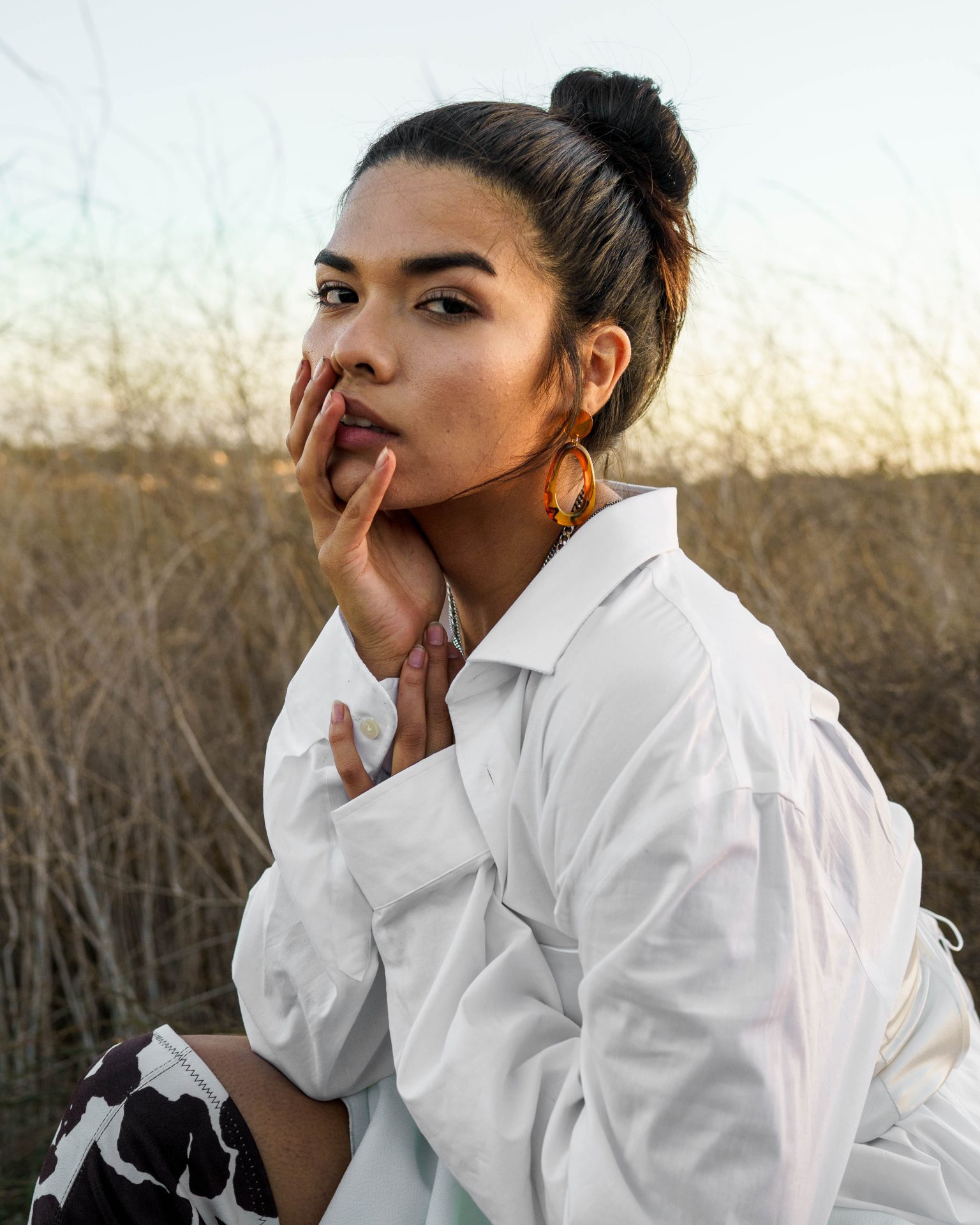
Of course you have to tell us about your skincare and makeup routine!
Usually I wake up, wash my face with the Ordinary oil cleanser, gua sha my face, cover it in the multi-peptide serum from the Ordinary, use Ponds cold cream to hydrate, followed by the tinted Supergoop glow screen. Then I apply NYX tinted eyebrow gel to my eyebrows, blot some Rare Beauty liquid blush to bring my cheeks to life, and spray some rosewater all over my face. That is my go-to routine when I want to look refreshed. I’m all about the “no makeup” makeup look.
My night time skincare routine is similar to morning aside from using makeup. I do like to incorporate a face mask, exfoliating, or oil cleansing at least one or two times a week to help with the overall appearance of my pores and texture. I find myself rotating the products I use with the seasons so that my combination skin can adapt more easily and become less irritated with the weather. I try to keep it short, simple, and sweet.
Can we ask some undoubtedly ridiculous questions that will help people be less (unknowingly) offensive? What are the best terms for Native peoples: Native, Native American, Indigenous, First Americans, First Nation? “Indian” is to be reserved for people from India, correct?
Terminology preferences can vary. Common terms include “Native American” in the U.S., “Indigenous” internationally, and “First Nations” in Canada. “American Indian” is less common today due to historical inaccuracies and it is usually best to use specific tribal names if possible. Yes, the term “Indian” is now considered outdated and should be reserved for people from India. Using the preferred term of individuals or communities is the most respectful approach, recognizing and honoring each unique identity and culture of each person.
What are commonly-held stereotypes that make you want to scream?
There are quite a few commonly-held stereotypes that boggle my mind and make me want to scream. One of the biggest is thinking Native Americans have it easy when it comes to living in America, on or off of their reservations. Some people think the government provides an endless amount of money, free schooling, and tools to help and enhance the life of everyone on the reservation, and so on… But this is not the case and never has been. Unfortunately, each tribe has to go through their own battles in order to try and receive the bare minimum of what they need and what they have been promised. Every tribe must band together and stand in solidarity to withstand, protest and fight against even bigger issues the government tries to place against Native Americans as a whole.
In terms of cultural appropriation, we all know to forgo the feather headdresses at Coachella and Burning Man, but are there other things people should just stop doing?
Cultural appropriation is a complex issue for people who can’t seem or refuse to understand it, and it’s so important to approach it with respect and sensitivity. In addition to avoiding feather headdresses at festivals like Coachella and Burning Man, there are other practices that people should be mindful of. It’s important to refrain from using sacred religious symbols or items from Indigenous cultures such as sage, feathers, certain beaded jewelry, etc… without a proper understanding or permission from someone of a tribe that is knowledgeable and willing to teach about it. Wearing traditional clothing as a fashion statement or a costume can be disrespectful, as these garments often hold deep cultural significance. It’s also important to avoid perpetuating cultural stereotypes, such as impersonating people from different cultures, having well known NFL teams with Native-inspired names, or using elements like Native American war paint for aesthetic purposes.
Appropriating spiritual practices, misusing foreign languages, adopting traditional hairstyles, or reproducing art and crafts without acknowledgment or knowledge are practices that are highly looked down upon and best avoided at all cost if you are not Native yourself. If someone wishes to engage with a certain tribe’s cultural practices, it’s always best to seek permission, get educated or educate yourself by doing research, and approach each matter with humility and respect, rather than treating it as a trend. Thoughtful consideration goes a long way in fostering cultural understanding and harmony.
What is something many people have zero awareness of when it comes to Native culture?
When non-natives ask if I have a native name or deliberately make one for me. My grandpa is named “Chief Ernie Long Walker” as he helped to lead the longest walk from San Francisco to Washington DC to protest threats to tribal land and water rights. These names are to be respected and given from one native to another as an achievement or commemoration from something they did or are doing. Some people think they’re being funny and personable when communicating with me and call me something like “Siyowin Skyscraper” because I am tall, but it’s not funny. I find it a bit annoying, insensitive, and unkind. Another thing people do is make “Indian calls” to try and get my attention. You can google Indian calling to get a general idea, but it can be very annoying and frustrating to know that non-natives still think this is appropriate and laughable.
As part of the younger generation, do you feel you can preserve and practice your spiritual traditions or is that aspect of Native culture less important compared to contemporary issues? How do you feel about shamanism (saging, sweat lodges) becoming so New Age mainstream? Is that another irritating form of appropriation?
Preserving and practicing our spiritual traditions is of utmost importance to mostly all of us in the Native American community. These traditions are an integral part of our identity, connecting us to our ancestors and the wisdom of our heritage. They offer guidance, strength, and a sense of continuity in the face of contemporary challenges. It’s not a matter of prioritizing one aspect over the other; it’s about finding a harmonious balance between our cultural traditions and the issues of our time.
Regarding the mainstream adoption of Indigenous spiritual practices like shamanism, it can be a complex and sometimes frustrating issue. When these sacred practices are commercialized or simplified without proper understanding, it can feel like a form of appropriation. It’s crucial for non-Indigenous individuals to approach these practices with respect, seek guidance from Indigenous sources, and understand the cultural significance behind them. This demonstrates a genuine respect for our traditions and helps prevent their inappropriate use and misrepresentation.
